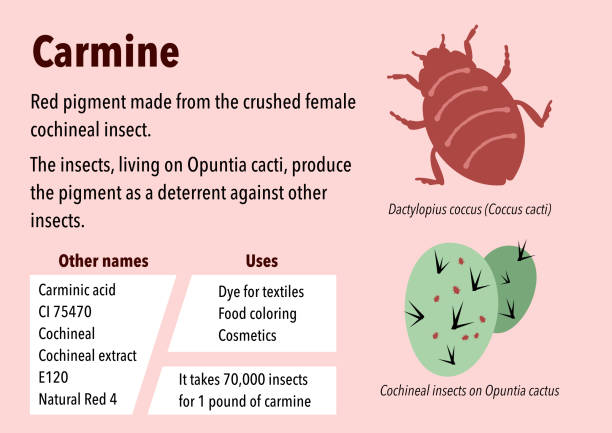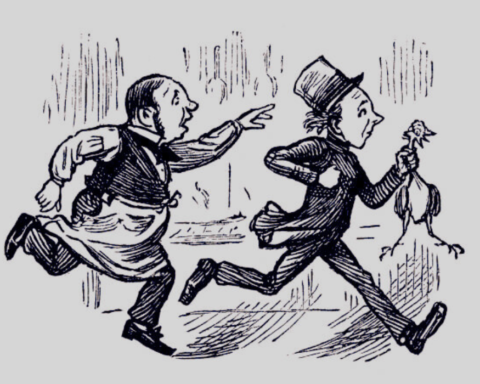Red is a color that symbolizes passion, love, and aggression. The origin of the red color is not as graceful as you might think. The bright scarlet shade is extracted from a bug called Cochineal. You might be thinking, what is Cochineal?
Cochineal is a minor scaly bug that belongs to the genus Dactylopius coccus. They are round and only 5mm or 0.20 inches long. They reproduce on cactus plants, especially the prickly pear cactus, also called nopal, belonging to the opuntia genus.
The weird combo is found in desert areas like Arizona, New Mexico, New Carolina, Texas, Colorado, and California because these areas are the natural habitat for pear cactus plants. The D. coccus feed on the moisturizing liquid and nutrients in these plants.
When did Cochineal find its use case?
Before the Cochineal bug, people used another bug for the red dye. Centuries ago, Carminic acid, the compound for bright red color, was extracted from the bug of the Kermes genus. The Aztec and Mayan empires used red dye.
In the 14th century, Spanish people started harvesting the Cochineal bug. The carminic acid extracted from D. Coccus was more vibrant than the Kermes. Due to the increased popularity of Cochineal, its demand rose. It became a commodity compared with gold and silver.
Farmers were getting rich by harvesting the bug. Wearing new clothes and eating in luxury raised a few eyebrows. Lords started noticing the increased demand and wanted a piece of it. So, cultivating the bug became a sport for the rich.

The Spanish used the red dye obtained from Cochineal in clothes, industry, food, and painting. Many lords and kings incorporated red color into their clothes. It also became the primary color for the red cross of the Christian community.
Spain wanted to have control over red dye. But the British Empire had different ideas about it. They could not miss an opportunity to get their hands on such a supreme item.
In the 1500s, the British Empire had a contract with the pirates while Britain and Spain were at war. Pirates looted tons of Cochineal dye from the Spanish ships.
The dye was presented to Queen Elizabeth, Queen of Britain. She rewarded the merchants handsomely and let them have a share in the red dye.
Cochineal remained the only definitive source of red for the most prolonged period. The clothes dyed in red were the representation of wealth and prestige. Many countries tried to break the monopoly of Spain by smuggling the cacti with the bug out of Spain.
But, raising the bug was not an easy task. It required the specific environment of the desert. So, it was not able to grow in the Caribbean islands. The remnants of the Cochineal plants are seen in Caribbean countries. The fruit of prickly cactus is a local delicacy.
The development of synthetic dye in the 1800s reduced the use of Cochineal bugs for the dye. Scientists were trying to produce red more efficiently and on a large scale.
What is Cochineal used for?
Since the Cochineal dye became the new world’s red dye, it has entered almost every market. Because of the superior bright red color of the bug extract, it has been used in painting, clothing, and the food industry for hundreds of years.
The production of red dye by the traditional method is a simple task. It took about three months for the bug to infest a pear cactus completely. After three months, the bugs are brushed off in a container and dried.

Once the bugs are dried, they are crushed, releasing carminic acid. A solution is made by dissolving the bugs in the water. Salt is added to this mixture, separating the carmine from the carminic acid. Carmine is the red dye that soaks into the fabric and other clothes.
Pay attention to the ingredients of any red food item. It might be mentioned as E120 or natural red 4. Some products mention carminic acid or carmine on the back.
They used calcium carmine solution in alcoholic drinks. In bakery items, an ammonium carmine solution is used. Almost every red item, like jam, cake, cookies, etc., has carmine dye in them. Because of bugs, many vegetarians dislike eating products made with carmine.
They used the insoluble portion of the Cochineal bug in the cosmetic industry. The natural red dye is safe for use on the skin. So, it is mixed in lipsticks, eyeshadows, tints, and nail polishes.
Is Cochineal the same as Red Food Coloring?
Yes! The red velvet cake you love might have bug juice in it. The thought of eating a bug might disturb a lot of people, but the bug is entirely safe to eat.
Except for some people having minor allergies, it has no side effects. In the 1800s, due to the development of synthetic dye, a decline occurred in the production of this natural dye.
The dye was hard to produce and time-consuming. The bugs needed a niche environment where they could grow and flourish easily. In the 20th century, the health authorities labeled synthetic dyes as cancerous. The food industry removed the use of red two and red four dyes.
After the incident, authorities labeled Cochineal dye safe for ingestion. Since then, the bugs have been used in several products. The main element is carminic acid. The acid pours out of the bug’s body when it is crushed. Each female Cochineal is about 15-20% carminic acid.
Scientists have been trying to produce a genetically better species of the D. Coccus. The task is not that simple. The primary method is to reverse engineer the carminic acid produced inside the body. Even after all the decades, it is still a work in progress.
Fun fact, to create one-fifth of a pound of red dye, we need 70,000 bugs, which weigh about a pound. You can judge the rarity of the dye from this situation.
Nowadays, Peru is the largest commercial producer of the D. coccus Cochineal insect, followed by countries such as Mexico, Chile, Argentina, and Spain’s Canary Islands.
Politigory provides in-depth reviews of science, history, humanities, religion, social sciences and arts











